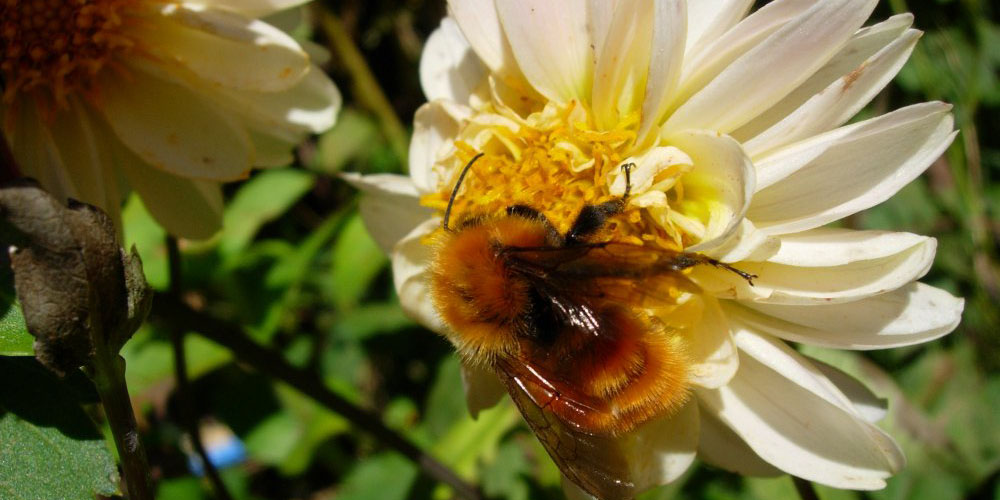As a student I learned that bumblebee species differ in tongue length and that they visit mainly matching flowers. Since then, I’m fascinated by floral ecology. Though I took another direction in my career, I still can’t look at a flower that I don’t know without wondering who pollinates it. The beauty of it: the flower itself gives you some hints. It’s not as rigid as the classification may seem, but it’s a guidance.
Bee flowers – big variety in form and colour
Of course I begin with bees. They are the most specialized pollinators: they feed on nectar on pollen and sometimes they are even specialized on single plants. Bee flowers on the other hand, are very diverse, but have some common traits. They’re brightly coloured, but not pure red. Yellow, white and blue are very attractive. This is because bees see colours differently than us, but I don’t want to wander off too much. Check this little video, if you’re interested in how bees see the world. “Bee flowers” have the typical smell that we would call “floral”, it’s sweet and in general we would judge it as nice (roses, violets, lavender…). Flowers try to attract bees by these signals. Sometimes though, they don’t make it too easy for them to get what they want. The variety of forms is amazing:

Cherries and other fruit trees are very attractive for bees. They have circular, easily accessible flowers. This Mason Bee apparently likes it.
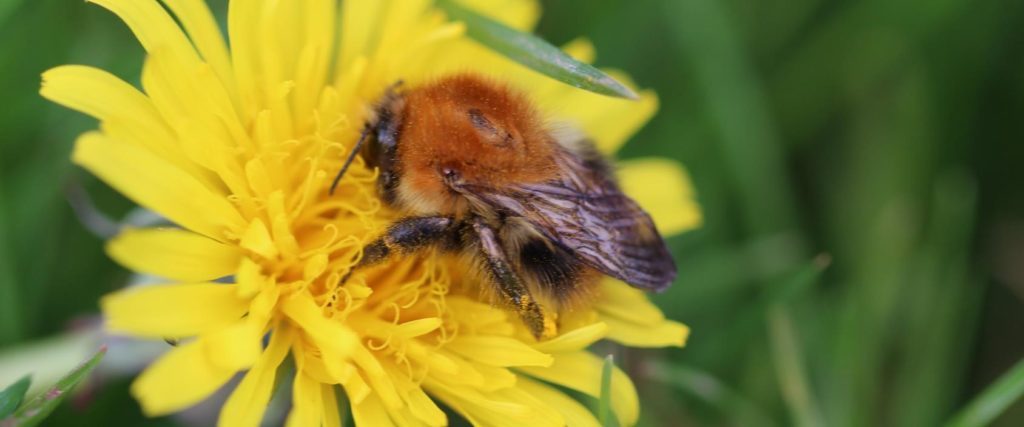
Dandelion is also round and open – but it consists of many small flowers that cluster together to one unit. To handle that is already somewhat more difficult. You have to get your tongue (if you are a bee…) into several narrow tubes.

Scabious is another example for such a composite flower. These are still suitable for bees with shorter tongues like the buff-tailed bumblebee.
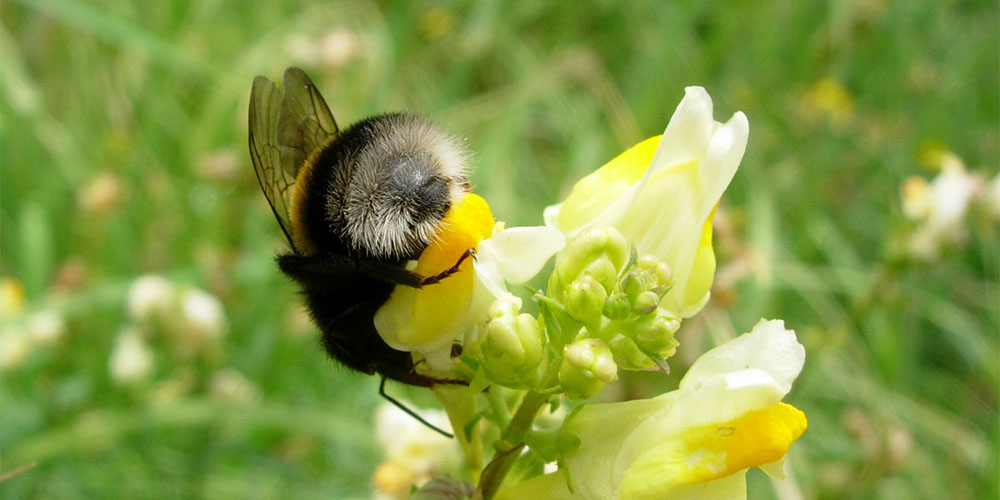
Snapdragon is already a more complicated case: the flower is “closed” and opens when a pollinator lands on the lower lip. The nectar is at the end of a narrow tube that only a longer tongue can reach. I realize only now that I caught this bumblebee chewing a hole for nectar robbing.
The very long ones – butterfly and moth flowers
Such asymmetric flowers with the nectaries at the end of a long tube are visited and pollinated mainly by long-tongued bees. There are even more inaccessible flowers, those which are meant for butterflies and moths. These generally are very long and narrow and the petals form a kind of plate on top. An example is the campion on the picture above this post or this Dianthus:
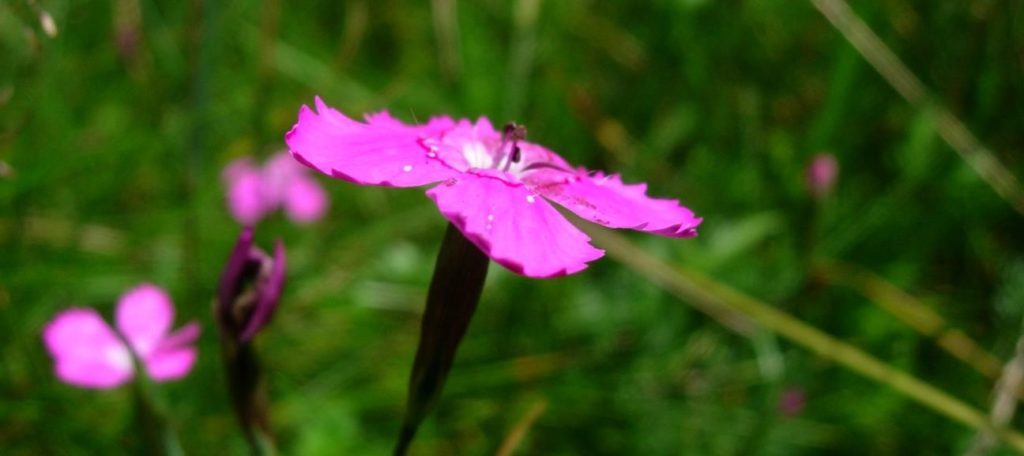
All members of the carnation family are typical butterfly flowers – their long and narrow mouthparts get deep down into the flower.
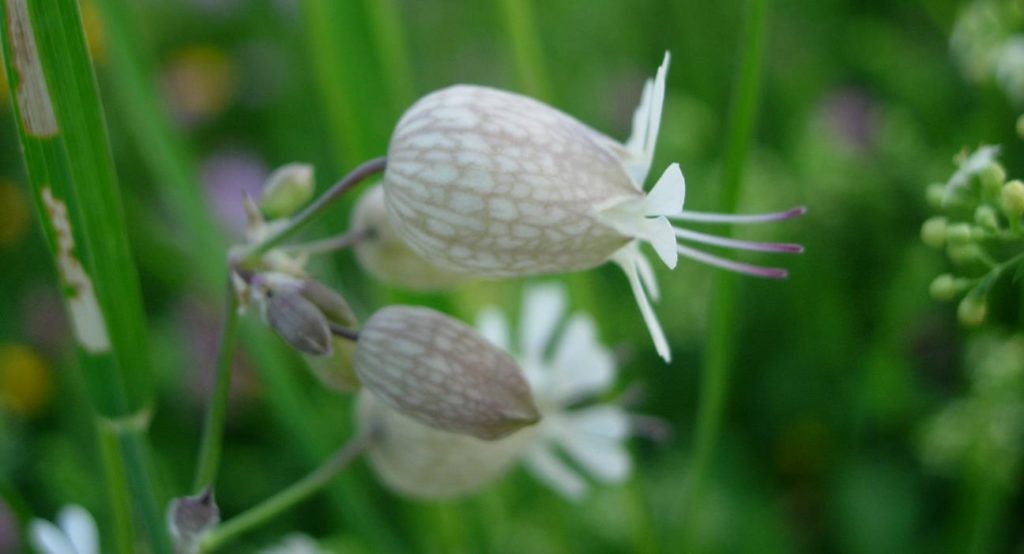
Bladder campion follows the same principle – though the “plate” doesn’t sit on a narrow tube.
Butterflies also manage to handle the more complicated bee flowers:

Or just have some fun together with other pollinators on less complicated blackberry flowers:

A pollinator trio on blackberry flowers. Yes, trio.
Which leads to another pollinator group.
Flies – the neglected pollinators
Do you wonder why I said trio under the last pic. You saw the fly, didn’t you? Well, flies are pollinators, too. And quite important ones, there is more and more evidence for that. And some of them are quite impressive. This year I saw my first hornet mimicking hoverflies, Volucella zonaria.
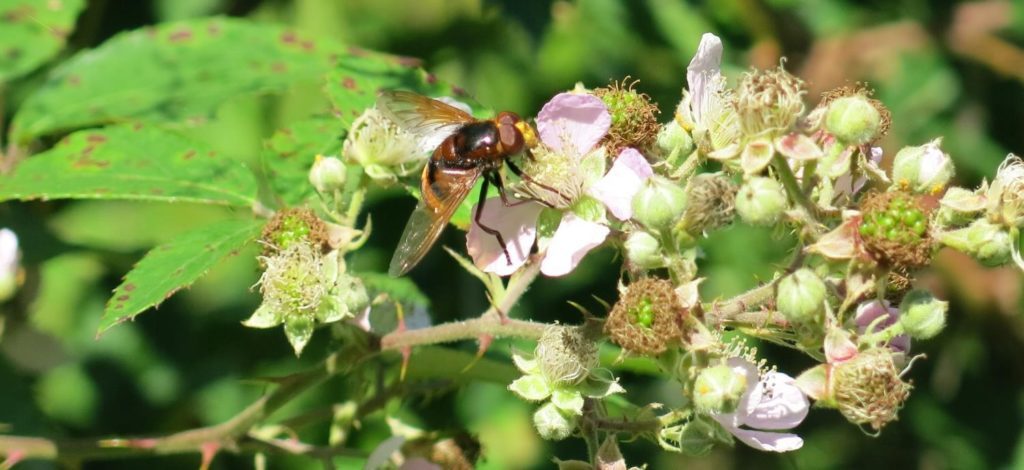
Volucella zonaria, the hornet mimicking hoverfly. At least, I think this was her.
There are also special “fly flowers”, which often are less brightly coloured and may have a quite… well, organic smell. The nectar is easy accessible. An example is ivy:

Ivy is a “fly flower”, with a more proteic than floral smell. Though, there is an oligolectic bee specialized on ivy, Colletes hederae (not on this photo!). Foto: Nanetti.
As I said, the classifications are more a guidance than a strict rule.
Finally: beetles!
We shouldn’t forget beetles in this list. They may be the less important in this list, but some species do visit flowers and feed on the pollen. They like flowers which offer their pollen openly, without too much difficulties. Like poppies:
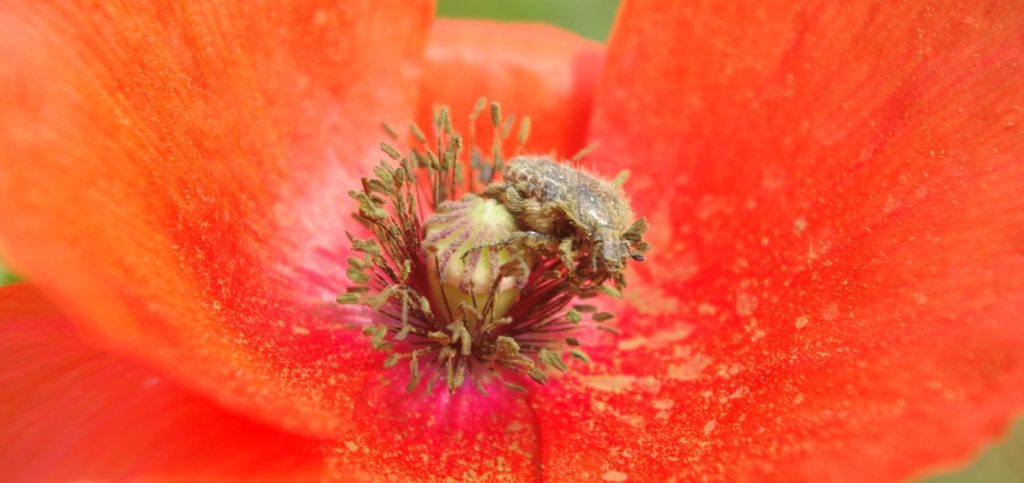
A beetle feeding on poppy pollen. A quite hairy little guy, so he might transport the pollen to the next flower when he gets there.
Floral ecology of course is much more than immagining who visits certain plants. It’s all about the structures and physiological processes involved in pollination. The relationship between plants and pollinators from the flowers perspective. How do they attract the pollinators? What rewards do they give? How difficult is it to get to this reward? And so on. All in all a very fascinating area. You may take it as a game: sit in front of a patch of flowers, and guess by the characteristics you see who may be the intended visitor.



